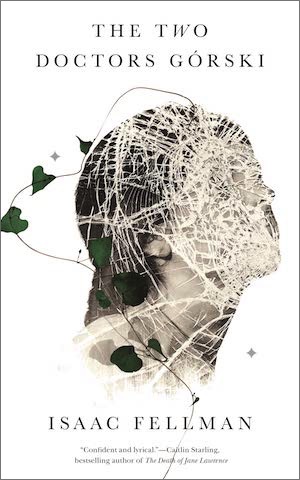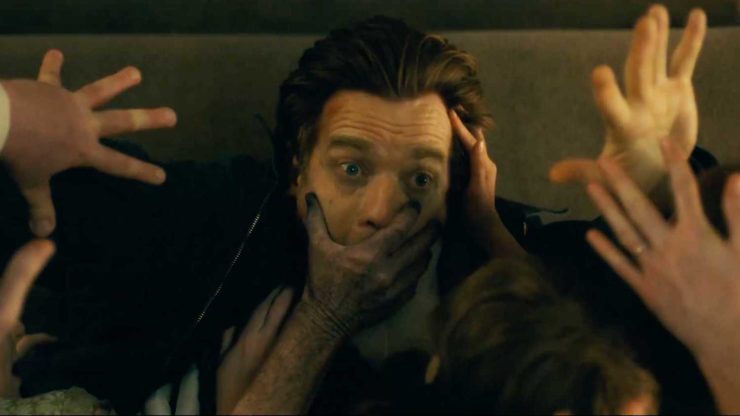Alfred Hitchcock had a simple but inviolate rule: If a child was being threatened in one of his films, that kid could not die. Hitch didn’t arrive at that prohibition on a whim; he had to learn it the hard way: In his film Sabotage (1936), a young boy is tasked by his father with delivering a package that, unbeknownst to the child, conceals a time bomb. But kids being kids, the boy dallies in his trip to the intended target and, sadly for him, the detours are just long enough for the clock to run out. British audiences were, to put it mildly, not entertained. They objected. Strenuously.
It’s not hard to figure out Hitchcock’s miscalculation. He wanted to shock (and set up the motivation for the film’s finale), but it turns out that audience empathy for the innocence and trust of childhood is a powerful thing, not to be toyed with. When the director put into peril a soul without the capacity to comprehend the danger, much less defend himself from it, his sin was almost as profound as that of the boy’s father. Once was enough for Hitchcock—he vowed never to toy with audience sympathies in precisely that way again. And most filmmakers have been wise enough to follow his lead.
As we all know, though, there’s really no such thing as “never.” A skilled artist who understands the reasons for a rule also knows when it may be broken (like, when a writer wants to begin a sentence with a conjunction, or lets it run-on, or indulges in way too many parentheticals). But <<cough>> if you’re going to fly in the face of as supreme a filmmaker as Hitchcock, you’d better have a damn good reason.
There’s an almost unbearable sequence in the film adaptation of Stephen King’s Doctor Sleep (2019). The main villains, Rose the Hat (Rebecca Ferguson) and her “family” of emotional vampires known collectively as the True Knot, have kidnapped a young boy with powerful psychic powers. As the child screams and pleads for his life, they stake him spreadeagle to the ground and proceed to methodically torture him, in the process extracting and ingesting the paranormal “steam” that is their lifeblood. While director Mike Flanagan downplays the gore, the boy’s terror and pain are palpable, and the sight of the True Knot descending vulture-like upon the child as he undergoes his excruciating death throes is an image that’s hard to shake. It goes against all sense of cinematic propriety, as if Flanagan is not only spitting in Hitchcock’s eye, but rubbing it in with a dirty handkerchief.
And, it turns out, for a damn good reason.
Doctor Sleep is the sequel to King’s The Shining, which in 1980 was adapted to film (to King’s displeasure) by Stanley Kubrick. In this follow-up, an adult Danny Torrance (Ewan McGregor), still recovering from the trauma of his childhood ordeal at the Overlook—where the evil embedded in the hotel’s walls sought to consume his “shine,” a.k.a. his psychic ability—has relocated from exile in snow-free Florida to a town in New Hampshire. There, he starts attending AA meetings, takes up work as an attendant at the local hospice—where he uses his psychic abilities to help dying residents transition over to the next world, thus gaining the honorific of Doctor Sleep—and most importantly, forms a telepathic bond with Abra (Kyliegh Curran), a thirteen-year-old with formidable powers that include telekinesis.
And here’s where director Flanagan justifies defying the tenets of a certified master of cinema. So powerful are Abra’s abilities that she is able to witness the True Knot as they slaughter that defenseless boy. And the fact that she’s nowhere near the scene doesn’t mean she’s in any less peril: It turns out that the psychic link is a two-way connection, alerting Rose to the existence of Abra and all of her yummy talents. Later, in a stunningly vertiginous sequence, the vampire projects herself across the country, and into Abra’s mind—visualized as a melding of the girl’s bedroom on one side and a wall of filing cabinets on the other. Rose scoffs at the bland orderliness, and proceeds to rifle through the files, believing she has another unwitting soul at her mercy.
Maybe not. Earlier in the film, a flashback shows young Danny and his mother, Wendy (Alex Essoe), watching a cartoon in which Bugs Bunny is in the clutches of Wile E. Coyote. It is, of course, a reference to Danny’s nickname, Doc, but Flanagan may also have been indulging in a bit of foreshadowing: One of Bugs’ favorite tactics when confronted by hunters, predators, and the occasional mad scientist is to feign vulnerability. He’ll play naïve, play foolish, play wounded, all the way to faking his own death (“Oh, agony! A-GOH-NY!”). The adversary never realizes that the wascally wabbit has been holding the upper hand the whole time, not until the rifle backfires, or a glance downwards exposes that there’s no ground underneath, or an ill-advised match-strike reveals that the sap has been lured into a closet full of dynamite.
And it turns out that wascally Abra might have a bit of Bugs Bunny blood flowing through her veins. In a stunning twist, the girl manages to pay back the overconfident Rose for her unrepentant sadism, trapping and mutilating the monster’s hand in a file drawer, invading her mind, and terrifying Rose to the point where her panicked flight from the girl’s trap knocks the woman physically off her meditation perch.
It’s a signal moment, not just for establishing who Doctor Sleep’s characters are and how they’ll confront the challenges facing them, but also in how it subverts the way a viewer relates to horror films, and their protagonists.
To get radically reductive, your typical horror film is a pretty simple thing: You have your monster, you have its victims. Monster pursues victims who, because they are dealing with a phenomenon far beyond their prosaic understanding, must first reconcile the nature of the threat before they can even consider how to confront it. Most often, that epiphany doesn’t occur until the third act. Whether or not the good guys emerge triumphant, many lives are lost by that point, and the survivors have spent a good bulk of the narrative fleeing the threat before finding the capacity to turn and fight. Kubrick’s own adaptation of The Shining adheres steadfastly to this structure (albeit brilliantly so).
Doctor Sleep is not having any of that. Although devastated by the vision of a child being tortured to death, Abra is secure enough in her powers that she rejects being cast in the role of victim. The dream confrontation with Rose comes about halfway through the film, and defines the story from that point on. Abra is not a victim but, young as she may be, a warrior. Instead of turning to flee, she resolves to confront the threat head-on, recruiting Danny to join in the battle.
Unfortunately, I didn’t have enough time to tackle Stephen King’s 600-plus page novel before writing this article. While I understand some things have changed in the transition from book to film—including, according to my research, setting the finale at the Overlook— I’m presuming that Abra’s literary character arc is not much different from what’s portrayed in the film. What I find interesting about that is, by either accident or design, King and/or Flanagan seem to have tooled their tale to meet the demands of present-day commercial cinema, where action takes precedence over all other aspects. I’m of mixed feelings about this, concerned that we’re getting to the point where the corp-run studios will only deem a film worthy of release if it’s a Dolby-jacked explosion-fest. But I’m also energized to see the protagonists of a horror film have agency—and act on it—so early in the tale. The notion of action-horror may yet come around to bite us on the butt, but in Doctor Sleep, the inversion of the template is quite refreshing.
Buy the Book


The Two Doctors Górski
Beyond refreshing, actually. In some ways, it’s actually pretty radical. From the moment that Rose begins to interact with Abra, the hitherto indomitable vampire is repeatedly thrown back on her ass (literally, at one point), caught off-balance by a will as powerful—and possibly more so—as her own. Ferguson’s portrayal of Rose’s panic and terror in the face of Abra’s resistance is compelling, and elevates the character above a two-dimensional personification of evil.
So much so that when the True Knot is lured into a death trap in a secluded forest, with Abra serving as bait and Danny and friend Billy (Cliff Curtis) picking off the members one by one with high-powered rifles, one cannot only be shaken by the wanton slaughter—horrible as the True Knot is, they still present as human—but can feel genuine empathy for Rose as she psychically monitors the extermination of her family. For all the horrors that Rose has unleashed, her pain and grief at that moment are real, and we find ourselves incapable of begrudging the woman her anguish.
There’s more to Doctor Sleep after that, including a whole sequence at the Overlook—because what director could resist going toe-to-toe with Kubrick? (For the record, Flanagan acquits himself just fine.) But at that point, the film has so subverted the horror template that the final confrontation is almost extraneous. Victims have refused their assigned roles, monsters have revealed their frailties. Rose has to perish, because she is a horrible creature, but similar to King’s original vision of Danny Torrance’s father Jack, there is something regrettable within her embrace of evil. As much as those they prey on, monsters can be their own victims.
* * *
I was pleasantly surprised with Doctor Sleep. For all that Stephen King can paradoxically be a difficult writer to adapt to film, and despite Mike Flanagan being honor-bound to pay obeisance to Stanley Kubrick in the third act (successfully so, at least), the film stands on its own as one of the best King adaptations in many years. But I will admit my knowledge of Stephen King’s works is not encyclopedic. Maybe you know how the writer’s previous works laid the ground for this sequel, or if there are other films—King-related or otherwise—that just as effectively flip the script (sorry, pun) on the whole monster/victim model. If so, we invite you to use the comments section below. Just keep it friendly—ghouls ain’t welcome here.
Dan Persons has been knocking about the genre media beat for, oh, a good handful of years, now. He’s presently house critic for the radio show Hour of the Wolf on WBAI 99.5FM in New York, and previously was editor of Cinefantastique and Animefantastique, as well as producer of news updates for The Monster Channel. He is also founder of Anime Philadelphia, a program to encourage theatrical screenings of Japanese animation. And you should taste his One Alarm Chili! Wow!










